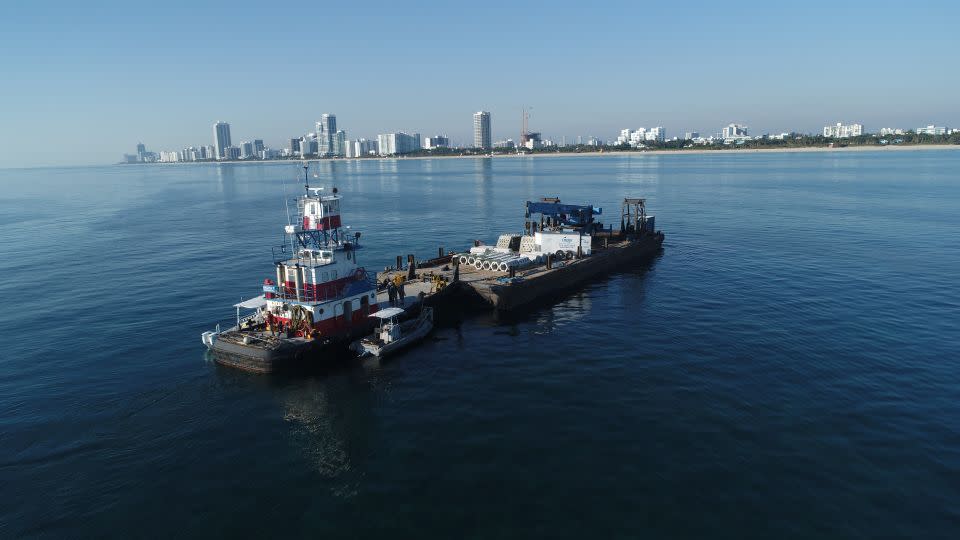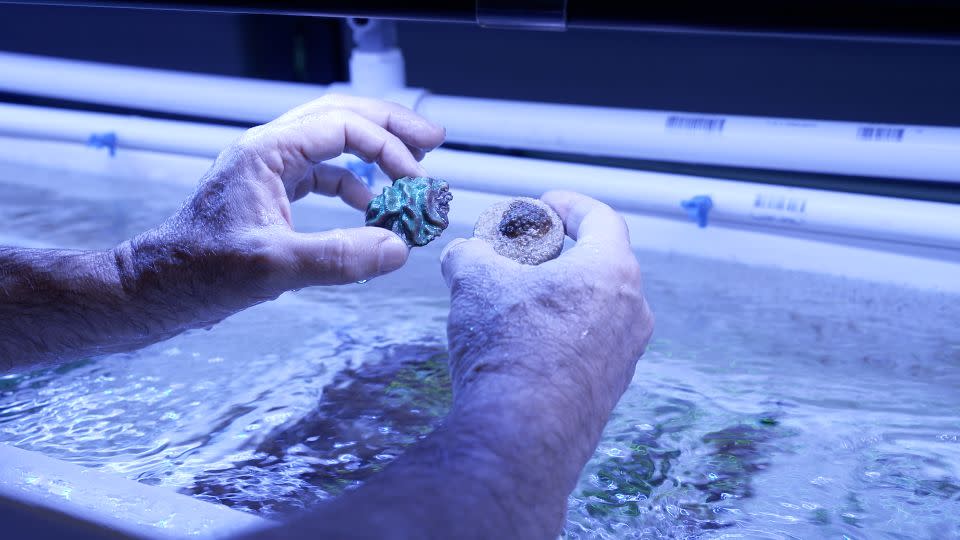Editor’s Note: Call to Earth is a CNN editorial series committed to reporting on the environmental challenges facing our planet, along with the solutions. Rolex Perpetual Planet Initiative partnered with CNN to promote awareness and education around key sustainability issues and to inspire positive action.
Miami Beach, Florida, is known for its art deco feel and turquoise waters. But just off the coast of this colorful city lies an underwater world in decline.
Florida’s coral reefs stretch almost 563 kilometers (350 miles) and is home to about 40 species of coral that not only provide food and shelter for aquatic life but also help protect coastal communities from storm damage.
Like other coral reefs, over the past few decades, this vibrant ecosystem has suffered from effects of climate changewith the National Oceanic and Atmospheric Administration recently reporting a fourth global mass bleaching event – the second in the last decade.
Bleaching happens when corals become stressed due to changes in their environment and expel the colorful algae that live on them. The corals turn white and begin to weaken.
“If bleaching goes on for a long period of time, corals die,” says Diego Lirman, associate professor of marine biology and ecology at the University of Miami.
Lirman directs the Rescue a reef laboratory, which aims to help conserve and restore this valuable but vulnerable habitat. “Coastal ecosystems protect our coasts from the impacts of storms and waves,” says Lirman. “They are the speed bumps of the ocean.”
Off the coast of North Miami Beach, he is leading an underwater experiment that combines natural corals with an artificial structure – creating a hybrid reef that he hopes will mimic the effects of a real reef.
“Ocean bumps”
Increasingly, artificial reefs are being implemented around the world to help restore marine ecosystems – from 3D printed tiles to sunken ships. Studies suggest that man-made structures can be effective, but factors such as location, design and placement can influence the outcome. In 2009, the UN International Maritime Organization produced guidelines around the placement of artificial reefs, noting that these reefs can have a negative impact “especially when waste, recycled or unsuitable materials are used”.
Lirman hybrid ECoREEF project consists of a concrete foundation covered with corals transplanted from their nurseries.
The experiment was born in the laboratory, where versions of the models underwent several tests, including extensive simulations on a powerful wave generator capable of recreating Category 5 hurricane conditions.
Lirman says the base alone can reduce wave action by 60 to 70 percent, with corals reducing it further by 15 to 20 percent.
“Combined, these two approaches can reduce wave energy and height by about 80 to 90 percent, which is what we want to protect our coasts,” Lirman told CNN.

In partnership with the city of Miami Beach, two hybrid reefs were deployed in March 2023. Over the past year, Emily Esplandiu, a research associate at Lirman’s Coral Restoration Lab, says she has witnessed different species of fish colonize the reef, along with turtles. , sharks and rays.
She told CNN that they also saw the corals they planted grow and flourish there. “So now we can see how different species and genotypes survive in these conditions and how resistant they are to high temperatures,” she says.
Coral Gardening
Lirman’s team has been growing and testing coral colonies at the university for more than 15 years.
“We are trying to understand why some corals survive while others die in the same environment,” says Lirman. “We are learning[ing] Of the survivors, what is there in their physiology, in their genetics? And then we’re using that information to create climate-resilient corals.”


The lab is also experimenting with “stress hardening,” where researchers expose corals to sublethal temperatures to prime their physiological response, making them less vulnerable to ocean temperature fluctuations. The corals are then transplanted to natural reefs or hybrid structures.
Every year, his team plants 10,000 to 15,000 corals on Miami-Dade reefs, Lirman says.
In the coming years, Lirman and his team plan to significantly expand the scale of the ECoREEF project, deploying larger structures around the Miami area, thanks to funding from the U.S. Department of Defense.
“They realized that the health of coastal ecosystems becomes a national security issue when their coastal bases are affected by storms and are then unable to do their jobs,” Lirman told CNN.
A global problem
Ocean ecosystems are declining and suffering around the world, says Lirman.
The main threat to corals worldwide is climate change, which is increasing sea temperatures and causing changes in storm patterns and ocean chemistry. Overfishing and dredging also play a role, Lirman says. As a result, coastal areas are increasingly exposed to waves and flooding.
“After every storm, the cost of rebuilding and the loss of property and life is simply enormous,” says Lirman. “We need to protect our coasts and nature-based solutions [like] Hybrid reefs are an effective and cost-effective way to do this.”
While Lirman hopes his experience can serve as an example for other coastal cities around the world, he says we also need to reduce climate-warming carbon emissions – “if we don’t do that, no amount of artificial reefs will save our cities.” back. ”
For more news and newsletters from CNN, create an account at CNN.com





































